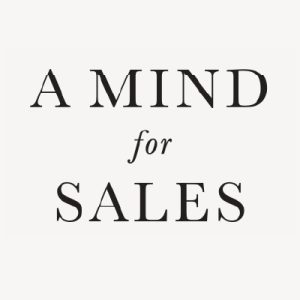Just because the customer asks for your price, doesn’t mean you have to deliver it right then and there.
In fact, there are a few reasons why you definitely shouldn’t lead with the price.
I want to talk to you about 7 rules for how to present your price so that you’re not shot down from the get-go, or challenged by objections either.
1. Do your due diligence.
You never put a price out in front of a customer until you have first understood three things:
One, what’s the critical need they’re trying to address? Is it a pain, is it a gain, is it a problem, is it an opportunity? What is it?
Two, are you dealing with the decision-maker?
And three, are they going to make a decision right now?
This is absolutely critical. Without the answers to these questions, it’s the blind leading the blind.
Read these 5 Tips to Never Discount Your Price Again.
2. Make your offer personal
One of the biggest issues that I find in this remote work environment is that too many prices are being delivered via email.
When you send your price out by way of email, you have now given your customer the opportunity to take your price and to shop it with everyone else out there. Because now, your price is in writing, so they can go to their current supplier, or to somebody else and use it against you.
The other thing is this; it’s so easy for the customer to just immediately respond and say, “Your price is too high.”
Instead, I want to deliver my price face to face. Now, you can’t always do that, right?
I understand that, but you can say, “Hey, there are a few things in this price piece that I need you to really understand, so I’m going to send it to you, but we need to have a conversation about it. How’s your calendar at 4:00 today?”
And at 3:59, that’s when you push send to then email that document—and immediately thereafter you have a conversation with them. And when you send it, you send it as a PDF. I’m never going to send it to them as a word document or an email because they can change it.
It’s got to be a PDF, but there have to be legs attached to it. That’s because if you don’t deliver your price personally, you run the risk of it being shot down.
3. Your price must be time sensitive.
Every price offer has to have a deadline attached to it. Now, does that mean after that date the price goes up? No, you can make an exception all you want. However, you’re trying to drive a decision.
Otherwise, you put a price point out there and then they don’t do anything. A year later, they come back to you and say, “Hey, this is the same price I want to pay.“
Choose an expiration date anywhere from three days to 14 days, depending on the industry, and depending on what it is that you’re selling.
4. Your offer and the outcome go together.
Never just present the offer. Always wrap it around the outcome that the customer’s looking for.
What was the big deal that the customer was looking to solve based on our conversation, and the issues they have, and the risks their company will be going through? Well, this is the solution we recommend to address all that.
You put the offer on the table, but wrap it around what it is, because there has to be a reference point.
5. Use the power of contrast.
I recommend you present the package two ways. You present the package first with a high priced offer. You give them the ultimate package–the one that’s got everything in it
Next step, let them vomit all over because it’s so expensive. That’s okay.
You say, “Fine, I’ve got another option for you,” and you put the second proposal on the table. You share the plan that really is what you feel is right for them. They’re going to look at that price and compare that to the first, higher priced offer.
“Wow, this is a bargain.” Actually, it’s called the power of contrast.
The power of contrast is so beautiful because if you had just put that second offer on the table, and not given them the ultimate package at the beginning, they would have said, “Oh, that’s too high. I need you to reduce that price more.” But because you give them the ultimate offer first that becomes the anchor point.
Now you’ve anchored the proposal around the solution they’re looking for, and you’ve anchored it around a higher price. Suddenly, it becomes much more acceptable to them. It’s about helping the customer to make a decision.
6. Present with confidence, and believe in your price.
The words you say are only half the battle. Eye contact, body language and a firm voice can make or break your price presentation.
I had a buyer tell me one time, “I can always tell when there’s a discount to be had because if the salesperson can’t deliver the price with a firm voice, eye contact and body language, I know there’s a discount to be had.”
More discounts are given because the salesperson fails to believe in the price than are giving it based on the demands of the customer. Believe in the price because of the solutions and the outcomes you can provide.
7. Be careful to stay in your lane.
It’s all the value you create, but for the right customer base.
That’s the reason people go into Starbucks and pay $6, $7, $8 for a cup of coffee. It’s the perception of the value they receive, but that same person would not walk into a McDonald’s and pay $6 for a coffee. Nope. It’s a different customer.
Sell to your customer base, not someone else’s customer base. Stay in your lane. And if you aren’t part of your customer base, you’ll never be able to sell to it.
This week on The Sales Hunter Podcast…
Tune in Thursday morning for a new episode with Mark Hunter, The Sales Hunter.
This week’s topic: How Do I Know If I Have Good Prospects?
Are you chasing suspects or prospects? Listen wherever you stream podcasts.
Copyright 2022, Mark Hunter “The Sales Hunter” Sales Motivation Blog. Mark Hunter is the author of A Mind for Sales and High-Profit Prospecting: Powerful Strategies to Find the Best Leads and Drive Breakthrough Sales Results.









Great post. Staying in my line has been difficult at times. Selling to the proper customer base is important like you mentioned, but at times I’ve fallen victim to selling to the wrong person. They ended up not being the decision maker and I was creating value for a person where my words were going in one ear and out there other. I can’t imagine how much time you would be able to save if you got really good at knowing who the decision maker was in the sales process!